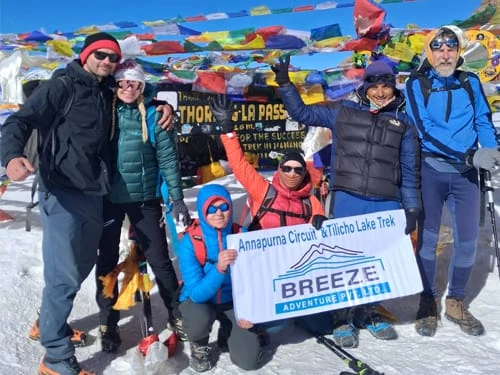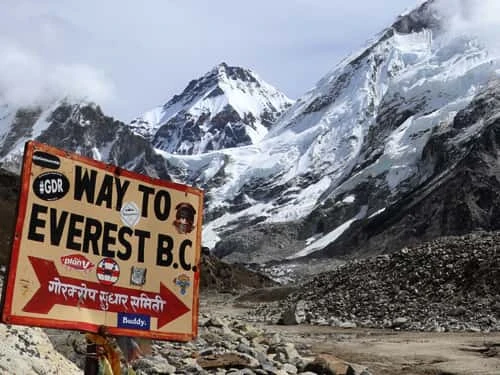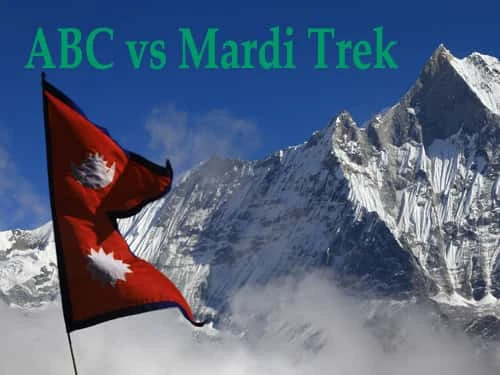Many climbers who have climbed both Everest and Kanchenjunga argue that Kanchenjunga climb is tougher than Everest expedition. Now, it could be a personal opinion, but when you go into the details you’ll have no option other than accepting the fact that Kanchenjunga climb is the most challenging and breathtaking expedition out there.
Most Challenging And Breathtaking Expedition | Kanchenjunga Climb
Table of Contents
Kanchenjunga Expedition
It is a different thrill altogether to climb on Mt. Kanchenjunga and reach the top. The mountain is the third-highest mountain in the world, and climbers from all over the world look forward to the opportunity to climb this giant.
Kanchenjunga Expedition is a 48-day-long journey. And like any other expedition, the Kanchenjunga climb can also be divided into three segments. The first one is the relaxation segment, and the easiest one among the three. On this day, you rest, fly or drive, or stroll for no reason. Altogether, there are 9 such days in the journey. Under this section fall your days in Kathmandu, the ones that you spend traveling to and from Taplejung. Also, the ones you spend acclimatizing on the route.

The second segment of the Kanchenjunga climb is the trek segment. Your journey from Tapethok to Pangpema on foot before the Kanchenjunga climb falls under this section. Also, the same way back after the Kanchenjunga climb. Altogether, you trek for around 12 days.
The third and the final segment is also the most challenging one, it’s the Kanchenjunga Climb section. The trekkers spend 28 days climbing the peak. During this time, they go from one base camp to another, sometimes ascending, and sometimes descending. They do so in order to get their bodies to adapt to the high altitude environment.
Kanchenjunga Circuit Trek
Kanchenjunga Circuit trek is the amalgamation of two great base camps. They are the Kanchenjunga North Base Camp trek and the Kanchenjunga South Base Camp trek. Since it is the amalgamation of both the journeys, the trekkers are offered the best of both worlds. Altogether, it consists of 21 core trekking days, which makes it one of the longest trekking journeys in Nepal.
The Kanchenjunga trek is also more difficult than the Kanchenjunga Base Camp trek. It is because of the increased duration. It offers you the attractions of both worlds. Also, it makes you go through the challenges of both treks, in the form of passes. Such as high-altitude places, extreme weather, rough terrain, and more.
On the trek to Kanchenjunga, the trekkers first finish the Kanchenjunga South Base Camp trek. Then, from Ramche, which is one of the villages on the route, they head towards Ghunsa, which is a village on the Kanchenjunga North Base Camp route. This is a path that joins both the treks, and in terms of going from one route to another, the trekkers need to cross Mirgin La.
Situated at 4480 m, it is one of the highest altitude passes on the route. From Ghunsa, the trekkers continue on their Kanchenjunga North Base Camp trek. Kanchenjunga trek starts and ends at Suketar itself.
Kanchenjunga Circuit Trek Map
Kanchenjunga Circuit trek is full of surprises, in the form of side trips and hidden attractions. There are so many of them that it’s almost impossible to cover all of them in one go. What you can do is choose the few that you like the most, and try to cover them instead. You can do this on your own only if you have a Kanchenjunga Circuit trek map in your possession.
The Kanchenjunga Circuit trek map will give you all the information about the route and the region. You’ll be able to decide which attractions to cover on your trek, as you’ll know where they are, what they are, and how long it will take for you to cover them. So, make sure that you have a map in your possession before you embark on your journey.
Kanchenjunga Trek Difficulty
Without a doubt, the Kanchenjunga trek is the most difficult trek in the region and one of the most difficult treks in the entire country. It expands for a duration of around 21 days, and most of the time during the trek, the travelers remain higher than 4000 m. At an elevation such as this, the chance of travelers suffering from altitude sickness increases.
Kanchenjunga trek difficulty level can be reduced by making the trek shorter. You can do this by excluding a few of the attractions. Also, by not covering a few of the high-altitude places, mainly the passes and the base camps. But there is a very high probability that once you do that, the trek will lose its essence. Kanchenjunga trek is nothing without the high Kanchenjunga trek difficulty level. Taking it in its original form is the only way of doing justice to the trek.

Kanchenjunga Base Camp Trek
Kanchenjunga massif is composed of 5 peaks altogether. The two Kanchenjunga Base Camp treks highlight the two different peaks. The Kanchenjunga South Base Camp trek takes you to the base camp of Kanchenjunga South. Whereas the Kanchenjunga North Base Camp trek takes you to the base camp of Kanchenjunga Main.
The entire region, along with the routes, the base camp, and the peaks, is part of the Kanchenjunga Conservation Area. This is one of the richest protected areas of Nepal when it comes to rare animal, bird, and plant species.
These living beings play a great role in making both the treks beautiful. During your journey, you will walk through beautiful rhododendron, magnolia, and bamboo forests. Don’t be surprised if you come across any of these rare animals and birds. These are the features that make the trek further exciting and picturesque.

Kanchenjunga South Base Camp Trek
Kanchenjunga South Base Camp trek is one of the most sought-after treks in Nepal. Altogether, it’s a 9-day-long journey, which starts at Lalikharka and ends at Ranipul. During the trek, you get to visit villages and settlement areas like Khesewa, Pumphe Danda, Yamphudin, Tseram, Ramche, and so on. Needless to say that the main attraction of the trek is Kanchenjunga South Base Camp, which lies at an altitude of 4730 m.
Apart from that, you also get to see Yalung Glacier, one of the prominent glaciers of the region, and numerous high-altitude lakes. Another significant attraction of the trek is the Rais and Limbus living in the region. These are indigenous communities living in the villages of this region for centuries. It’ll be an absolute pleasure to get to know these people, their cultures, and traditions.

Kanchenjunga North Base Camp Trek
Kanchenjunga North Base Camp trek is one of the most amazing treks in the region. In comparison to the Kanchenjunga South Base Camp trek, the Kanchenjunga North Base Camp trek is slightly longer. It consists of 14 core trekking days altogether.
The journey starts at Ranipul and ends at Sakathum. During the trek, the trekkers will come across villages such as Amjilosa, Ghunsa, Lhonak, Khambachen, Gyabla, and so on. Needless to say, the main attraction of the trek is Kanchenjunga North Base Camp, which is also known as Pangpema.
It is situated at an altitude of 5140 m. You will have the most amazing views of peaks such as Kanchenjunga, Kubhakarna, Ramtang, Makalu, and so on, during your journey. Also, you’ll get to see Jhinsang and Kanchenjunga glaciers up close, among many others.
Kanchenjunga Base Camp Trek Solo
Kanchenjunga Base Camp trek is one of the toughest treks out there. Besides high altitude, rough terrain, and extreme weather, the unavailability of basic facilities like food and accommodation contributes to its toughness. In a route where such facilities are not available, the trekkers are forced to carry all their stuff on their own.
Now, if you’re walking in a pack, all this seems possible, but for someone who’s walking on his own, it all seems like a herculean task. Though going on the Kanchenjunga Base Camp trek solo is not impossible, it’s certainly not meant for everyone either.
If you are an expedition enthusiast, and yet, you haven’t gone for the Kanchenjunga climb, well, you’re missing out on a lot of things. As per popular opinion, the Kanchenjunga climb is the most challenging and breathtaking expedition out there. And what makes it so are the high-velocity winds that flow on the peak at all times.
The natural phenomenon occurs on the top of Everest as well, but not with as much intensity as on top of Kanchenjunga. It is things like these that give a climber the chill and the adrenaline rush. Go for the Kanchenjunga climb if you have the required skills and experience. You will definitely regret not going for the Kanchenjunga climb any earlier and missing out on all the adventures.
Some frequently discussed topics besides Kanchenjunga climbing are:
Breeze Adventure offers all kinds of travel packages. For instance, trekking and expedition, helicopter ride and mountain flight, luxury travel, and so on. They have years of experience in the field and the best travel experts working for them. They offer their clients the most amazing travel and tour-related services at the most affordable price.
They prioritize client satisfaction. And so, they allow their clients to make changes to the itinerary so that it meets their interests. If you’re looking to trek in the Kanchenjunga region or go for a Kanchenjunga climb, make sure to choose Breeze Adventure as your travel partner. With them by your side, your journey is going to be the most memorable one so far.



